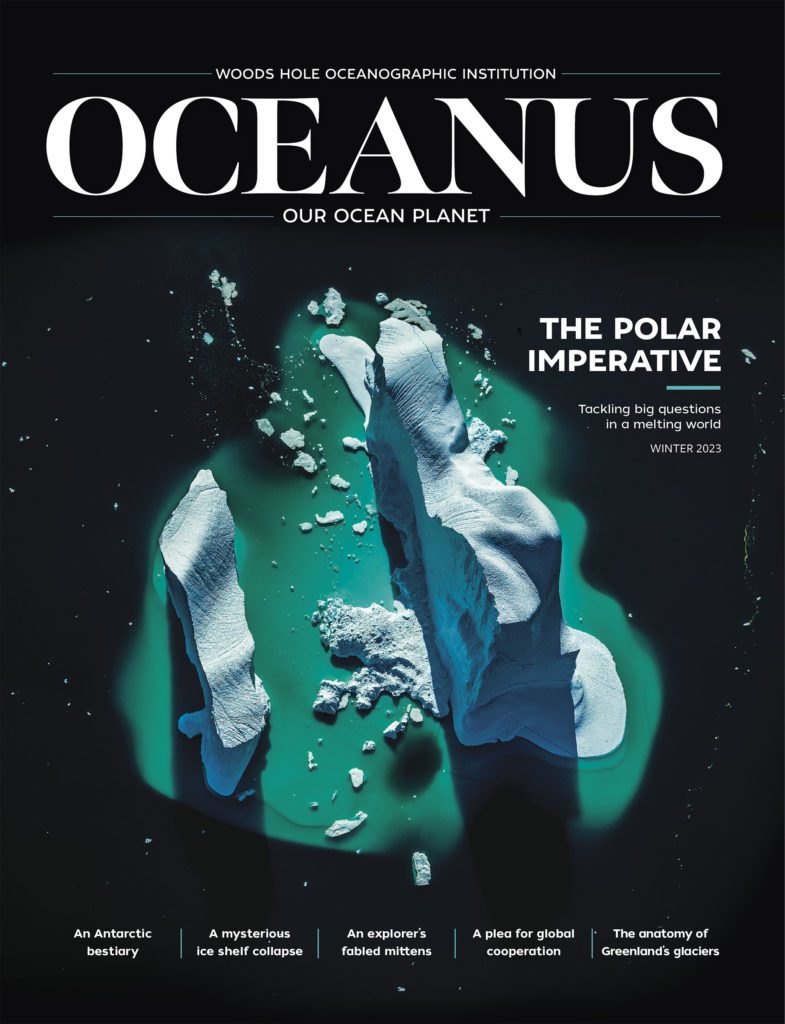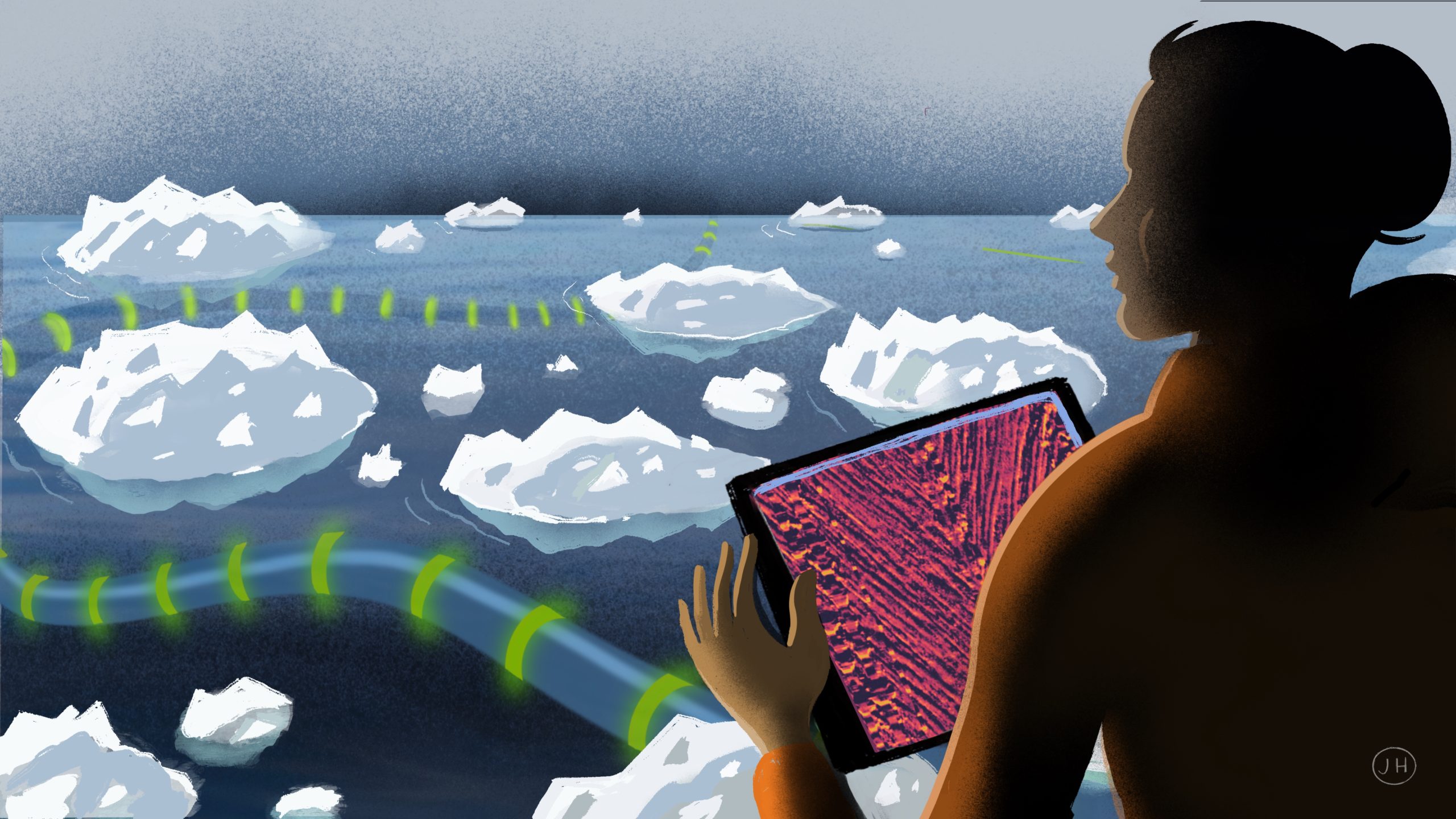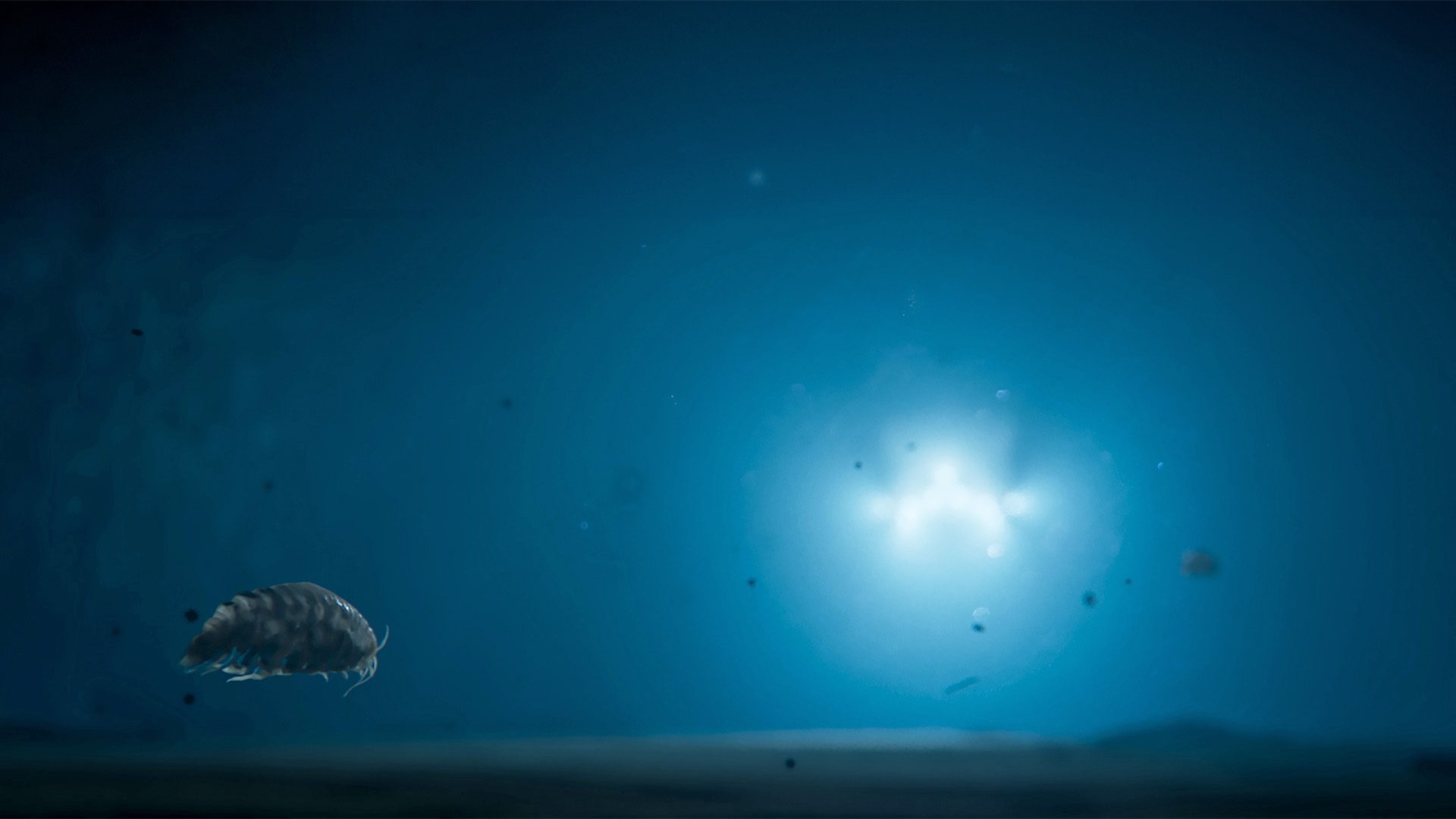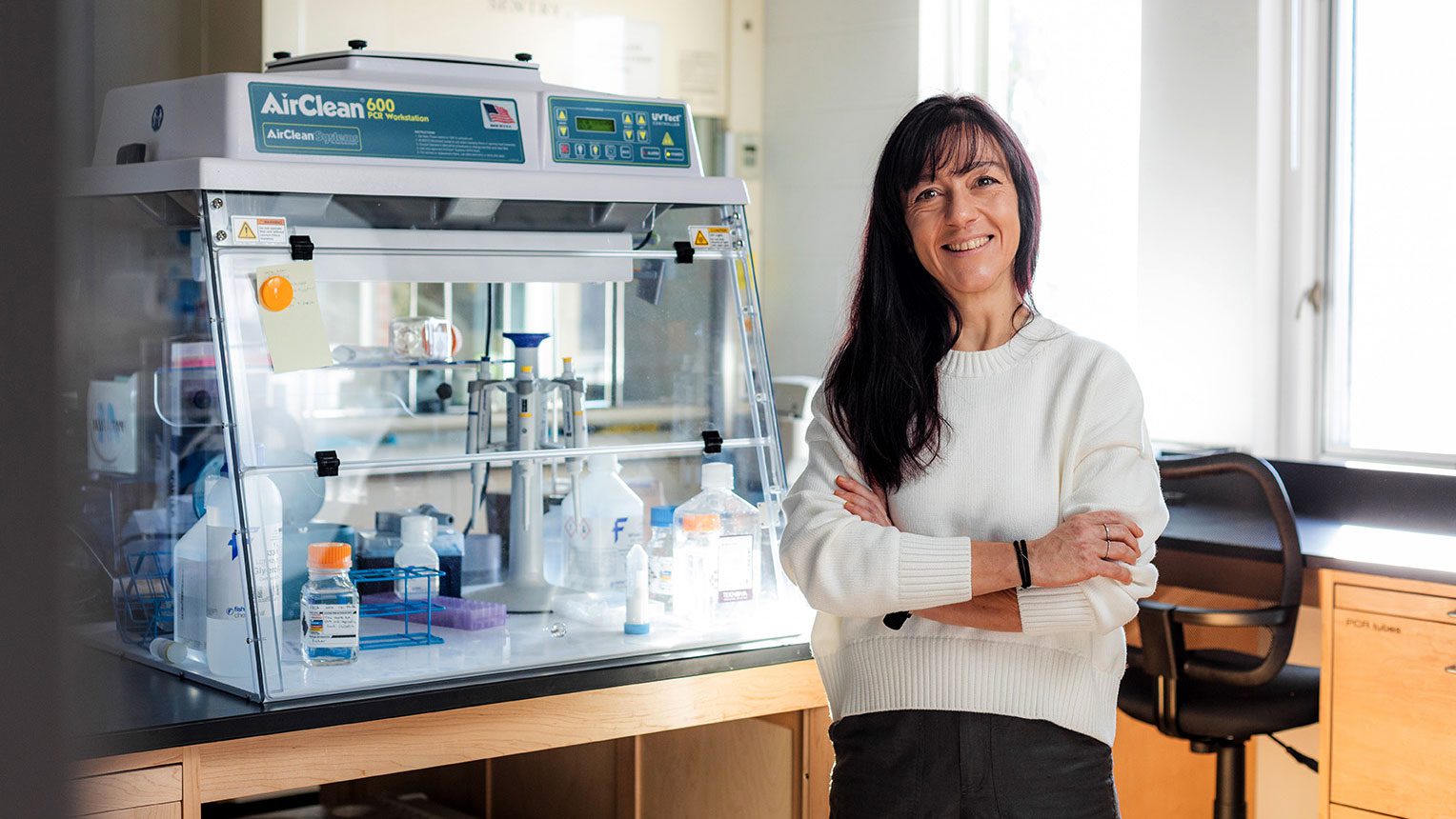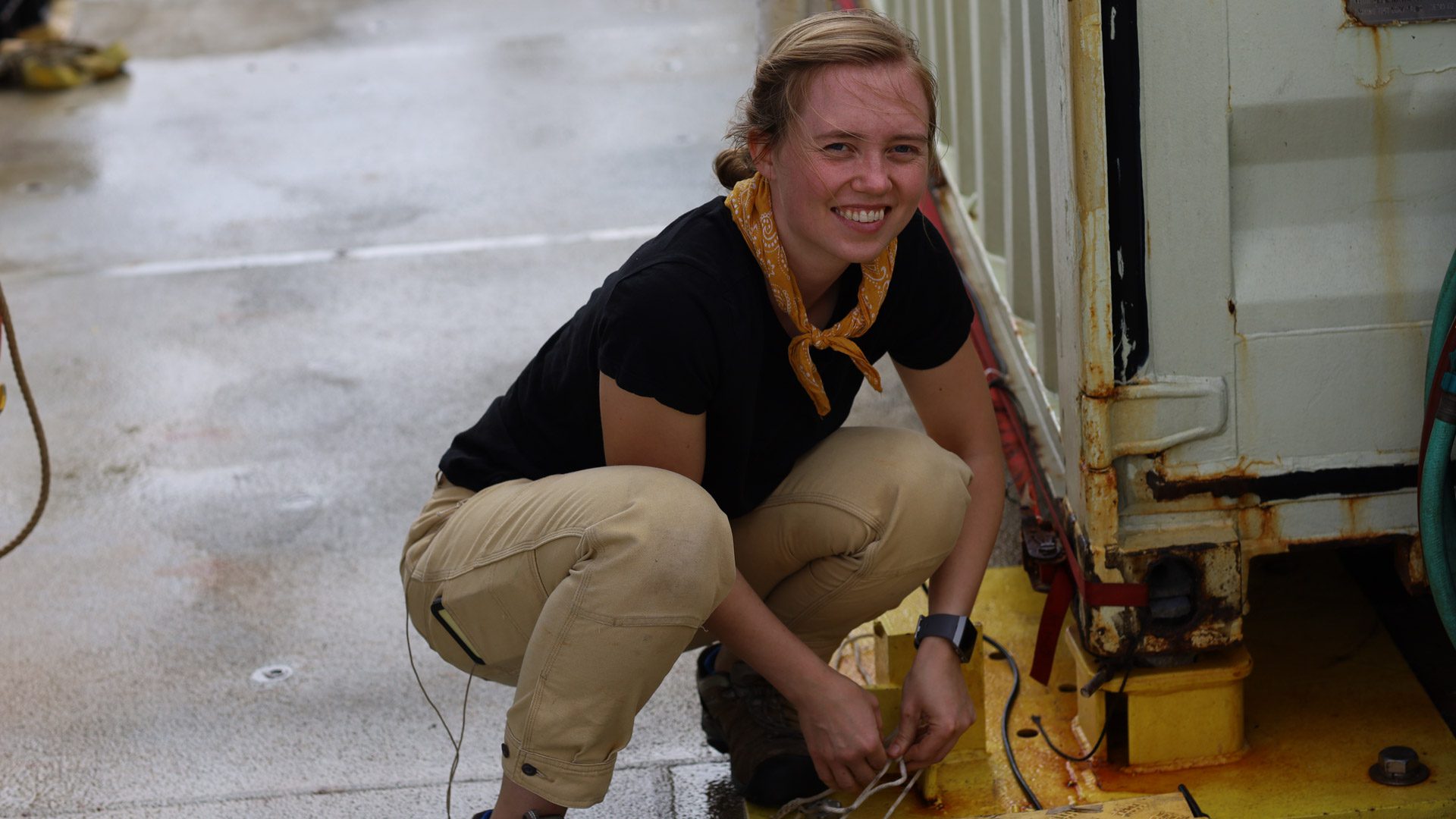
Meet the Sentry Team: Amanda Sutherland
A Mechanical engineer on independent workflow and collaboration
Estimated reading time: 4 minutes
Amanda Sutherland is a mechanical engineer in the Sentry Group at the National Deep Submergence Facility hosted at Woods Hole Oceanographic Institution. Sutherland started in this position just a few weeks before the COVID-19 pandemic reached the U.S. "I had just enough time to get a sense of the culture here and think: I really like this. I'm so glad I'm here," Sutherland recalls, "And then I got to go work from home." A lifelong New Englander, Sutherland says she always hoped to work with underwater vehicles at WHOI but never thought it would happen. She took some time to talk with Oceanus about her work on Sentry and her career path as a mechanical engineer.
Oceanus: What does your day-to-day work look like?
Sutherland: My work is independent whether I work from home or not. And that's because the Sentry Group is a small team and at any given time many of us are at sea. Sometimes I don't see my co-workers for months at a time. It's a very unusual work environment in that way and very different from where I was before.
In my last position I would design part of a product and then it would disappear into the ether. Maybe a year later I would find out that it was used. Here I am involved in the whole process-when I design a new part, I also order or fabricate the pieces myself and will generally get to go on the cruise and use it for the first time.
Oceanus: What are you working on right now?
Sutherland: Right now, I'm designing a bracket to attach a new doppler velocity log to Sentry. This sensor sends out an array of sound waves and they bounce back and allow Sentry to navigate along the bottom of the ocean.
One interesting thing about Sentry is that we have to make sure the vehicle remains compatible with old parts. We don't get a lot of opportunities to test things before we put them on the vehicle and use them on a cruise, so we always need a way to go back to the previous system. In this case, the bracket for the doppler velocity log is designed so that we can reinstall our previous instrument if necessary.
Oceanus: How is your work different when you go to sea?
Sutherland: I go from working independently on shore, to living on a ship with my coworkers for up to fifty days at a time. I wouldn't know my team that well if we didn't go to sea. But now I've lived with them for months at a time.
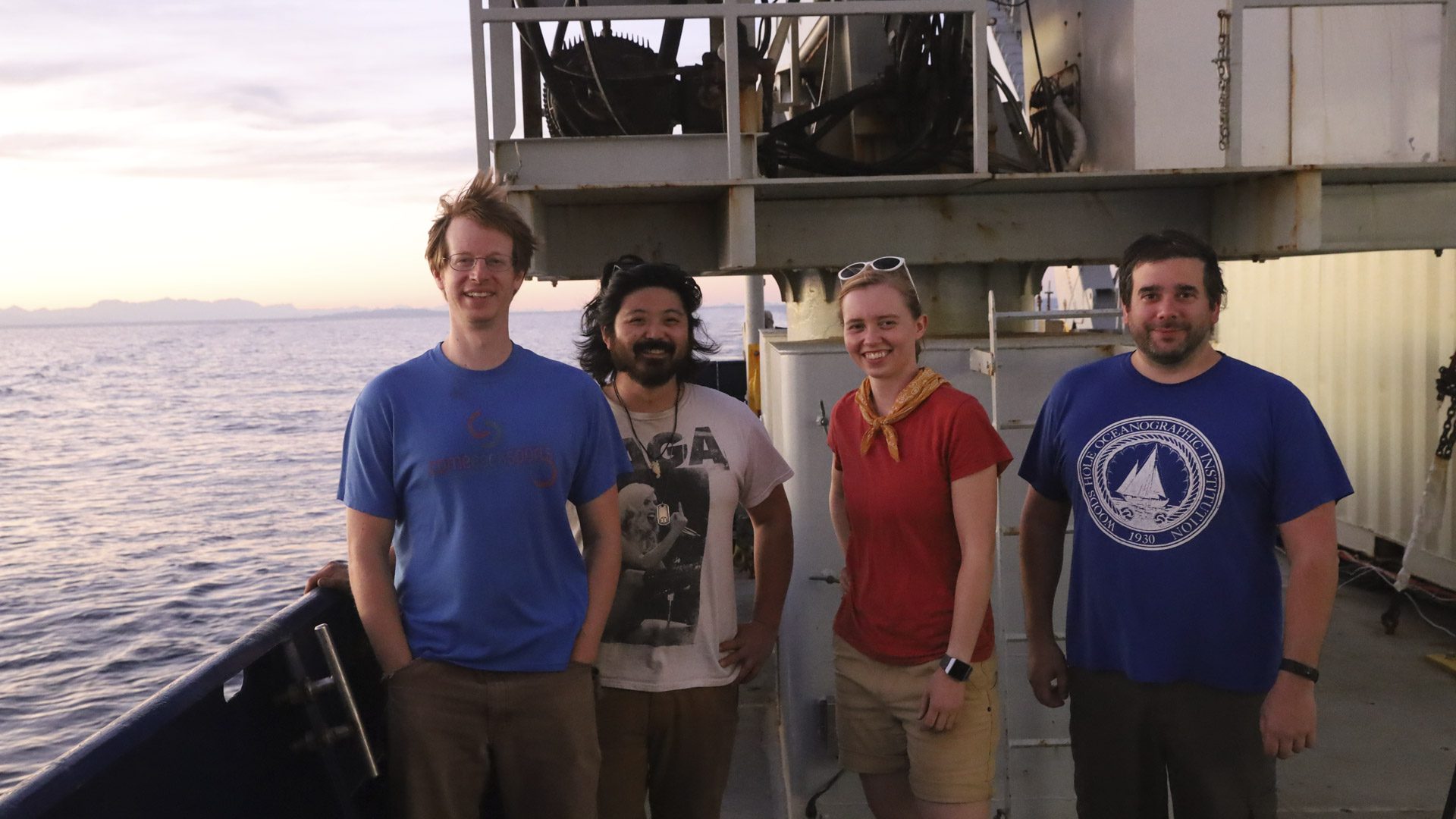
Members of the Sentry Group at sea during a cruise to the Guld of California in fall 2021. Left to right Name, Name, Amanda Sutherland, Name. Photo courtesy of Peter Girguis
The level of collaboration that happens within the Sentry Group on cruises is incredible. On my first cruise I was just trying to pull in as much information as I could, trying to absorb everything. I was watching dive prep and thought: "Do they all have a mind meld? How do they know exactly what the others are thinking?" It was amazing.
Now I know that everything is interconnected and organized because that is the system we set up. There is this synchronized dance that we've got and we all have our parts memorized. During our deck test before launch, the folks at our workstation inside and someone on deck follows an established process. We know what should be happening and have a radio communication checklist that ensures we are completely clear on what is happening.
Oceanus: Why did you pursue a career working on underwater vehicles?
Sutherland: I grew up near the water in New England. My family would go to Maine for vacations in the summertime. For generations, my family has been involved in shipping and casual sailing, and all kinds of things ocean and water related, so it's kind of a built-in interest of mine. I figured that if this is something I love, and I also love building things and working with my hands, ocean engineering sounds great.
I had great mentors during my undergraduate at Olin College of Engineering. I was privileged enough to go to a school with people who had done interesting things and really cared, and they introduced me to people in this field. That's how it happened really. I got an internship with Bluefin Robotics, a company owned by General Dynamics, and I worked for them as my first job after graduating.
I knew about WHOI, but I never thought I would get to work here. It's ideal for me. I'm working alongside scientists and getting the opportunity to learn about these amazing subsea environments. Also, when you get to work directly alongside end users, you get a unique insight into what you can do to iterate and improve our system for them. It's rare for engineers to see exactly how their work is used. Another aspect of this job is that I'm out on the water all the time, and for me that is a huge plus.
Oceanus: Are there any future capabilities you imagine for Sentry?
Sutherland: I'm still continually amazed at the things that we can do with Sentry. We can strap all kinds of instruments to the outside and it still behaves well. That is not standard for underwater vehicles. Many AUVs are delicately mechanically balanced and additions of external or even large internal instruments would significantly change their performance. The fact that we can do this with Sentry allows us to provide a wider range of possibilities for scientists. In terms of mechanical engineering and Sentry, my goal is to look for areas where we can improve our capabilities and enable scientists to do even more.
